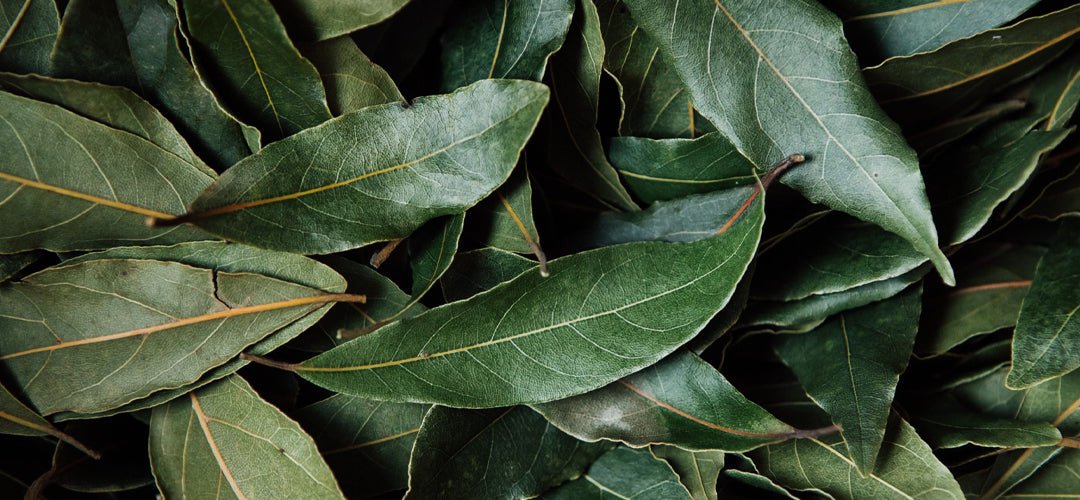
How To: Use Bay Leaves
Worn in a garland by Augustus Caesar to protect against lightning, bay leaves are a fragrant leaf from the laurel tree used in cooking. The leaves are added to slow-cooked recipes, such as soups, sauces, and stews, and are removed before serving the dish. They have a floral and herbal scent reminiscent of oregano and thyme and are used more often than any other herb.
What do bay leaves do?
Cooking with bay leaves adds flavour without adding extra sodium, fat, or calories. If ground bay leaf is used, small amounts of vitamins A, C, and B6, as well as iron, calcium, and manganese may be consumed.
A convenient side benefit can be achieved by hanging lightly crushed bay leaves in cheesecloth in your pantry; this will help to deter insects, especially weevils.
Bay leaves are also said to be calming. Try brewing a warm cup of milk with a bay leave and some vanilla bean for a delicious and soothing beverage.
What do bay leaves taste like?
Since bay leaves aren't eaten, the flavour is more about what they bring to a recipe. Bay leaves add a subtle depth of flavour to cooking, helping to bring out other flavours and spices in the dish. Add too many, and they can be too pungent and add an overpowering bitterness to the dish.
What is the difference between dried and fresh bay leaves?
Fresh bay leaves are shiny green on top with a paler green on the underside. As the leaves dry, the flavour intensifies. Fresh bay leaves are often much more expensive and do not last as long as dried bay leaves. As a rule of thumb, use half the amount of dried leaves than you otherwise would use fresh.
How to cook with bay leaves
Bay leaves are not generally eaten, but are rather simmered in a sauce or included in a braising liquid, and then removed before serving. Simply add the whole dried leaf to the recipe and remove once finished cooking.
Bay leaves should be added at the beginning of cooking as the longer they simmer, the more time they have to release flavour and allow it to infuse the dish. In our recipe for Roasted Cauliflower Soup with Chimichurri, bay leaves are added alongside the roasted cauliflower at the beginning. In addition to simmering in soups and stews, bay leaves are great for stuffing into the cavity of a chicken before roasting it, and can also be added to the liquid when cooking rice.
How to store bay leaves
Fresh bay leaves can be placed in a sealed zip-top bag and stored in the refrigerator where they will last for a week or two. Dried bay leaves can be stored in a sealed container in a cool, dry, and dark spot; they will last up to two years before losing their aroma.
People Also Bought
- Choosing a selection results in a full page refresh.
